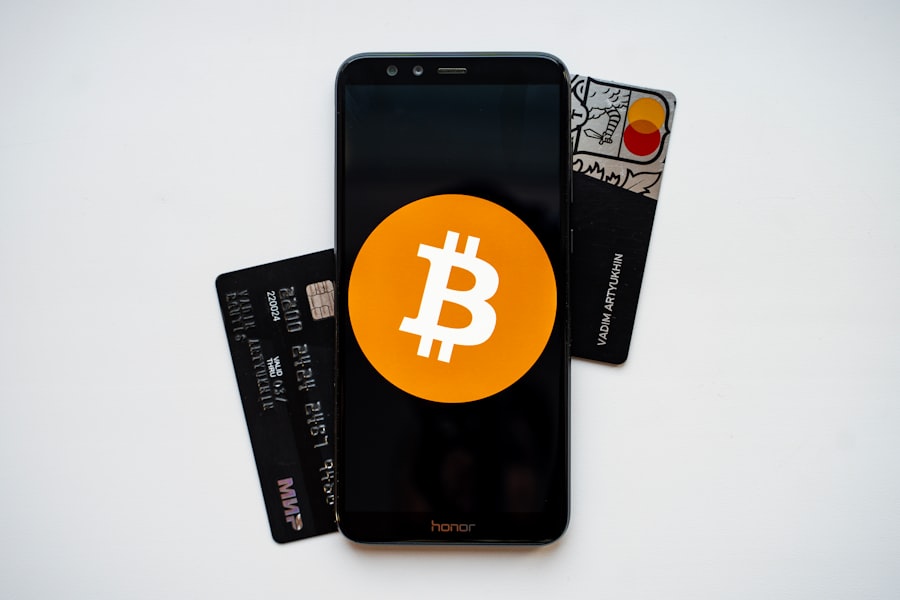In recent years, Non-Fungible Tokens (NFTs) have gained significant attention and popularity in the world of digital collectibles. NFTs are unique digital assets that are stored on a blockchain, making them verifiable and secure. Unlike cryptocurrencies such as Bitcoin or Ethereum, which are fungible and can be exchanged on a one-to-one basis, NFTs are indivisible and cannot be exchanged on a like-for-like basis.
The appeal of NFTs lies in their ability to provide collectors with ownership and authenticity over digital assets. With NFTs, collectors can own unique pieces of art, music, fashion, virtual real estate, and even sports memorabilia. This opens up a whole new world of possibilities for collectors who want to expand their collections beyond physical items.
Exploring the Benefits of NFTs for Collectors
a) Increased ownership and authenticity: One of the key benefits of NFTs for collectors is the ability to truly own and authenticate digital assets. With traditional digital files, it is easy for anyone to make copies or distribute them without permission. However, with NFTs, each asset is assigned a unique token that verifies its authenticity and ownership. This gives collectors peace of mind knowing that they have the original and official version of a digital item.
b) Access to unique and rare items: NFTs provide collectors with access to unique and rare digital items that may not be available in any other form. Artists and creators can release limited edition NFTs, creating scarcity and exclusivity. This makes owning an NFT a special experience, as collectors can own something that is truly one-of-a-kind.
c) Potential for investment and profit: Another exciting aspect of NFTs for collectors is the potential for investment and profit. Just like physical collectibles, the value of NFTs can appreciate over time. Collectors who are able to acquire rare or highly sought-after NFTs can potentially sell them for a profit in the future. This has led to a booming market for NFTs, with some collectors making significant returns on their investments.
Creating Unique NFTs: Tips and Tricks
a) Importance of originality and creativity: When creating NFTs, it is important to focus on originality and creativity. The more unique and innovative your NFT is, the more likely it is to attract collectors. Think outside the box and explore different mediums and styles to create something truly special.
b) Utilizing blockchain technology for security and verification: Blockchain technology is at the core of NFTs, providing security and verification for digital assets. When creating NFTs, make sure to choose a reputable blockchain platform that offers robust security features. This will give collectors confidence in the authenticity and ownership of your NFTs.
c) Collaborating with artists and designers: Collaborating with artists and designers can help elevate your NFT creations. By working with talented individuals, you can bring unique perspectives and skills to your NFTs. This collaboration can also help you tap into existing fan bases and communities, increasing the visibility and demand for your NFTs.
NFT Marketplaces: Where to Showcase Your Collection
a) Overview of popular NFT marketplaces: There are several popular NFT marketplaces where collectors can showcase and sell their collections. Some of the most well-known platforms include OpenSea, Rarible, SuperRare, and NBA Top Shot. Each marketplace has its own unique features and user base, so it’s important to research and choose the platform that aligns with your goals as a collector.
b) Tips for navigating and selling on these platforms: When navigating NFT marketplaces, it’s important to understand the platform’s rules and guidelines. Each marketplace has its own set of requirements for listing and selling NFTs. Take the time to familiarize yourself with these guidelines to ensure a smooth selling experience.
c) Importance of building a strong reputation and brand: Building a strong reputation and brand as a collector can greatly enhance your success in the NFT marketplaces. Engage with the community, participate in discussions, and showcase your collection on social media platforms. By establishing yourself as a trusted and respected collector, you can attract more buyers and increase the value of your NFTs.
NFT Auctions: Maximizing Your Earnings
a) Explanation of NFT auctions and their potential benefits: NFT auctions are a popular method for selling high-value and rare NFTs. In an auction, collectors can bid on an NFT, with the highest bidder winning the item. Auctions can create a sense of excitement and competition, driving up the price of the NFT and maximizing your earnings as a seller.
b) Tips for setting reserve prices and bidding strategies: When participating in or hosting an NFT auction, it’s important to set a reserve price that reflects the value of the NFT. This ensures that you don’t sell your NFT for less than its worth. As a bidder, it’s important to have a bidding strategy in place. Set a maximum bid that you are willing to go up to and stick to it to avoid overspending.
c) Case studies of successful NFT auctions: There have been several successful NFT auctions that have garnered significant attention and high prices. For example, Beeple’s “Everydays: The First 5000 Days” sold for $69 million at auction, making it one of the most expensive digital artworks ever sold. These case studies highlight the potential for significant earnings through NFT auctions.
NFT Gaming: A New Frontier for Collectors
a) Overview of NFT gaming and its potential for collectors: NFT gaming combines the world of gaming with the world of NFTs, creating a new frontier for collectors. In NFT games, players can collect and trade unique in-game items that are stored as NFTs. This adds value and rarity to these items, making them highly sought-after by collectors.
b) Examples of popular NFT games and their unique features: There are several popular NFT games that have gained a large following. Axie Infinity, for example, allows players to collect and breed digital creatures called Axies. These Axies can be bought, sold, and traded as NFTs. Other examples include Decentraland, where players can buy and sell virtual land as NFTs, and CryptoKitties, where players can collect and breed unique digital cats.
c) Tips for getting started in NFT gaming: If you’re interested in getting started in NFT gaming, it’s important to do your research and understand the game mechanics and rules. Familiarize yourself with the different NFT games available and choose one that aligns with your interests. Start small and gradually build your collection as you become more familiar with the game.
NFT Music: Revolutionizing the Music Industry
a) Explanation of NFT music and its potential benefits for artists and collectors: NFT music is revolutionizing the music industry by allowing artists to release their music as unique digital assets. With NFT music, artists can sell limited edition songs, albums, or even concert tickets as NFTs. This provides artists with a new revenue stream and collectors with exclusive access to their favorite artists’ music.
b) Examples of successful NFT music releases: Several artists have successfully released their music as NFTs, generating significant revenue in the process. For example, Kings of Leon released their latest album as an NFT, which included exclusive artwork and special perks for collectors. This limited edition NFT sold out quickly and generated a substantial amount of income for the band.
c) Tips for investing in NFT music: If you’re interested in investing in NFT music, it’s important to research the artist and their track record. Look for artists who have a strong following and a history of success. Additionally, consider the scarcity and exclusivity of the NFT music release. Limited edition releases are more likely to appreciate in value over time.
NFT Fashion: Blending Art and Fashion
a) Overview of NFT fashion and its potential for collectors and designers: NFT fashion combines the worlds of art and fashion, allowing designers to create unique digital fashion items that can be bought, sold, and traded as NFTs. This opens up new possibilities for collectors who want to own exclusive pieces of digital fashion.
b) Examples of successful NFT fashion releases: Several designers have successfully released their fashion collections as NFTs. For example, luxury brand Gucci collaborated with digital artist Beeple to release a limited edition virtual sneaker as an NFT. This virtual sneaker sold for thousands of dollars, highlighting the demand for unique digital fashion items.
c) Tips for investing in NFT fashion: When investing in NFT fashion, it’s important to consider the reputation and track record of the designer. Look for designers who have a strong following and a history of creating innovative and unique fashion items. Additionally, consider the scarcity and exclusivity of the NFT fashion item. Limited edition releases are more likely to appreciate in value over time.
NFT Virtual Real Estate: Investing in the Metaverse
a) Explanation of NFT virtual real estate and its potential for investors and collectors: NFT virtual real estate allows investors and collectors to own land or property within virtual worlds or metaverses. This opens up new opportunities for investment and creativity, as virtual real estate can be developed and monetized.
b) Examples of successful NFT virtual real estate sales: There have been several successful NFT virtual real estate sales, with some properties selling for millions of dollars. For example, a virtual estate in the metaverse Decentraland sold for $2.4 million, making it one of the most expensive virtual real estate transactions to date.
c) Tips for investing in NFT virtual real estate: When investing in NFT virtual real estate, it’s important to research the metaverse and its potential for growth. Look for metaverses that have a strong community and a history of successful projects. Additionally, consider the location and features of the virtual property. Properties in prime locations or with unique features are more likely to appreciate in value over time.
NFT Sports: The Future of Sports Memorabilia
a) Overview of NFT sports and its potential for collectors and athletes: NFT sports combines the world of sports with the world of NFTs, creating a new way for collectors to own and trade sports memorabilia. With NFT sports, collectors can own unique digital items such as trading cards, highlight reels, or even virtual experiences with their favorite athletes.
b) Examples of successful NFT sports releases: Several sports organizations and athletes have embraced NFTs as a way to engage with fans and generate revenue. For example, the NBA launched NBA Top Shot, a platform where fans can buy and sell officially licensed NBA highlight reels as NFTs. These highlight reels have become highly sought-after by collectors.
c) Tips for investing in NFT sports: When investing in NFT sports, it’s important to research the athlete or sports organization behind the NFT. Look for athletes or organizations with a strong following and a history of success. Additionally, consider the scarcity and exclusivity of the NFT sports item. Limited edition releases or items associated with significant moments in sports history are more likely to appreciate in value over time.
Embracing the Power of NFTs for Collectors
In conclusion, NFTs have opened up a world of possibilities for collectors. With NFTs, collectors can own and authenticate unique digital assets, access rare and exclusive items, and even potentially make a profit through investment. Whether it’s art, music, fashion, virtual real estate, or sports memorabilia, NFTs offer collectors a new way to expand their collections and engage with their favorite artists, designers, and athletes.
As the popularity of NFTs continues to grow, it’s important for collectors to stay informed and explore the various opportunities available. By understanding the potential benefits and strategies for success in the NFT market, collectors can make informed decisions and maximize their experience in this exciting and rapidly evolving space. So don’t be afraid to embrace the power of NFTs and start exploring this new frontier for collectors.









